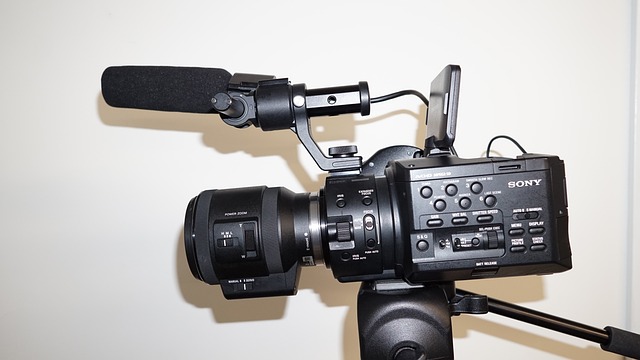Converting DivX to WMV format enhances video sharing across platforms. DivX offers high-quality compression but limited compatibility, while WMV ensures wide support for smooth playback on Windows and other devices. Using tools like "Convert DivX to WMV" preserves video quality and optimizes file sizes. Simple steps include downloading conversion software (e.g., HandBrake, VLC), verifying internet connectivity, and keeping devices updated. Best practices also involve using widely supported codecs (WMV, MP4) and optimizing compression for efficient data exchange.
In today’s interconnected world, seamlessly sharing files across different platforms is crucial. This article guides you through the process of converting DivX to WMV, a popular format ideal for cross-platform compatibility. We’ll explore why this conversion is beneficial, including enhanced accessibility and reduced file size. Learn about essential tools, follow a step-by-step guide, and discover best practices to ensure smooth file transfer without hassle. Understanding DivX and WMV formats and their advantages sets the foundation for efficient multimedia sharing.
Understanding File Formats: DivX and WMV Explained

When it comes to sharing files, understanding file formats is crucial. Two commonly used formats are DivX and WMV, each with its own strengths and compatibility across platforms. DivX, known for its high-quality video compression, allows for smaller file sizes while maintaining excellent visual quality. This makes it ideal for online streaming and sharing over limited bandwidth connections.
On the other hand, WMV (Windows Media Video) is a format developed by Microsoft, making it seamlessly compatible with Windows devices and platforms. It offers good compression ratios and supports a wide range of codecs. For users looking to convert DivX to WMV, several online tools and software are available, simplifying the process of ensuring your videos can be viewed across different operating systems and devices without compromising quality.
Why Convert DivX to WMV? Benefits for Cross-Platform Sharing

Converting DivX to WMV format offers significant advantages for sharing files across different platforms. DivX, known for its high-quality video compression, isn’t always compatible with all devices and software, especially in a diverse digital landscape where various operating systems and media players are in use. WMV, on the other hand, is widely supported, making it an ideal choice for seamless cross-platform sharing.
By converting DivX to WMV, users can ensure their videos play smoothly on a broader range of devices, from Windows PCs to Apple MacBooks, and even on popular streaming platforms or media apps on smartphones and tablets. This compatibility enhances the accessibility and usability of video content, enabling seamless collaboration and entertainment across diverse technological environments.
Choosing the Right Conversion Tools

When sharing files across different platforms, selecting the right conversion tools is essential for ensuring compatibility and optimal file size. Tools like Convert DivX to WMV can be invaluable in this process. DivX, known for its high-quality video encoding, needs to be converted to formats supported by a wider range of devices and software, such as WMV (Windows Media Video). The right conversion tool will not only preserve the quality of your video but also compress it efficiently, reducing file size without noticeable loss in visual fidelity.
Choosing the correct converter involves considering factors like output quality, file size limitations, supported formats, and ease of use. Some converters offer advanced settings for fine-tuning the output while others focus on simplicity for quick conversions. For instance, a good converter should allow you to select specific codecs, adjust bitrate, and choose between different resolution options to suit your sharing needs. By selecting a suitable tool like Convert DivX to WMV, users can seamlessly share their multimedia content without worrying about compatibility issues.
Step-by-Step Guide: Converting DivX to WMV

Converting DivX to WMV is a straightforward process that allows for seamless file sharing across platforms. Here’s a step-by-step guide to help you make the transition easily. First, download and install a reliable video converter tool that supports both DivX and WMV formats. Popular options include HandBrake and VLC Media Player.
Next, launch your chosen converter and import the DivX file you wish to convert. Adjust the output settings by selecting WMV as the desired format and configuring the resolution and quality to suit your needs. Once the settings are finalized, start the conversion process. Depending on the file size, this might take a few minutes. After completion, locate the converted WMV file in the designated output folder and you’re ready to share it across different platforms.
Common Issues and Troubleshooting Tips

When sharing files across different platforms, users often encounter common issues that can be frustrating. One such challenge is when trying to convert and share videos, for instance, converting DivX to WMV format for compatibility. The process might seem daunting at first, but with a few troubleshooting tips, these hurdles can be easily overcome.
Firstly, ensure you have the right conversion software. There are numerous tools available that specialize in file format changes. Choosing one that supports both DivX and WMV will simplify the process. Secondly, check your internet connection; a stable and fast connection is crucial for seamless downloads and conversions. Lastly, update your media players and devices to ensure they can play the converted files without issues. Regular updates often include compatibility improvements, making it easier to share content across various platforms.
Best Practices for Seamless File Transfer Across Platforms

When sharing files across different platforms, adhering to best practices ensures a seamless experience for all users involved. One common challenge is converting file formats to ensure compatibility; for instance, converting DivX to WMV can be necessary when sending videos to recipients using different devices or software. Prioritize format versatility by choosing widely supported codecs like WMV or MP4 for video and PDF or DOCX for documents, minimizing the need for additional conversions.
Additionally, compress files optimally to reduce sizes without sacrificing quality. This not only speeds up transfer times but also saves bandwidth, especially when dealing with large multimedia files. Regularly update your devices and software to support the latest file formats and compression standards, ensuring you leverage efficient data exchange protocols.
Converting DivX to WMV is an efficient solution for seamless cross-platform file sharing. By understanding different file formats and their benefits, choosing the right tools, and following a simple conversion guide, users can ensure smooth transfer of multimedia content. Remember that proper conversion not only maintains quality but also offers compatibility across various devices and platforms. So, whether you’re a video enthusiast or a professional, adopting this practice will revolutionize your digital sharing experience.
